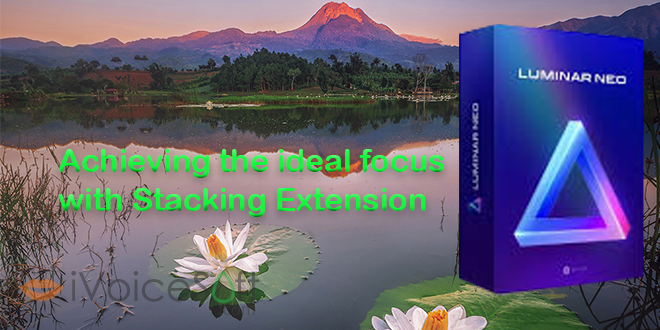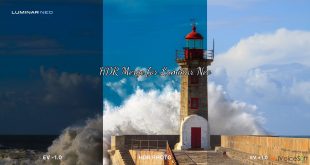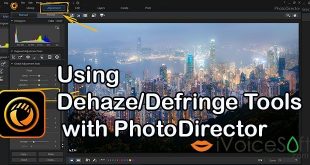Introducing the latest addition to the Luminar Neo all-in-one creative editing platform: Focus Stacking, a powerful tool designed for merging photos with varying focal lengths.
The fifth extension joining the Luminar Neo editing platform is Focus Stacking. This tool simplifies achieving an extensive depth of field in photographs by merging up to 100 source images. Whether you’re engaged in macro photography, portrait shots, or capturing landscapes, Focus Stacking is here to make creating images with consistent sharpness across the frame a breeze.
In this article:
About Skylum Software
About Skylum Software, Skylum is a global imaging technology company dedicated to creating tools that streamline image editing. Luminar Neo leverages advanced AI-based technologies, empowering artists with complete control over the final results. Skylum has earned accolades such as the Red Dot Award, Apple’s Best of Year, Best Imaging Software by TIPA and EISA, and numerous other industry recognitions.
Unlock limitless creativity with Luminar Neo’s unified platform
Skylum is devoted to evolving Luminar Neo into a comprehensive creative platform for photographers. Already featuring HDR Merge and Noiseless AI, with Upscale AI and AI Background Removal on the horizon, the introduction of the fifth Extension, Focus Stacking, expands the artistic possibilities for Luminar artists.
Photographers may easily produce extraordinary results with the help of Luminar Neo, an application that is quickly developing into a collection of professional tools adapted to certain requirements. The platform’s ability to include new tools is shown by the ongoing development of Extensions.
Enhanced depth of field with Focus Stacking
Leveraging Luminar Neo’s adaptable new engine, Skylum delivers Extensions while maintaining high performance. Focus Stacking, as the fifth Extension for Luminar Neo, is a professional-grade AI-based feature that amalgamates multiple images captured at different focal lengths, yielding a final image with a more extensive depth of field compared to any of the source images. This Extension can stack up to 100 source images and automatically align and crop them based on a reference photo. Furthermore, it automatically corrects lens and chromatic aberrations for raw photos.
Best focus stacking proves invaluable for photos with multiple points of interest that require continuous sharpness: a breathtaking panorama behind a subject, a flower with petals and a stem on different planes, or a landscape encompassing both foreground and background elements. This Extension ensures uniform depth of field across all areas of the image.

Extensions tailored to photographers’ requirements
The addition of Extensions represents a natural progression of Luminar Neo’s innovative problem-solving approach. Already released and announced Extensions include:
- HDR Merge, for easily creating HDR images from up to 10 photos
- Noiseless AI, to reduce noise in grainy photos
- Upscale AI, which upscales photos up to 6x while preserving quality
- AI Background Removal, enabling one-click removal of the background behind the main subject in a photo
All Extensions are accessible to Luminar Neo subscribers or through a one-time purchase of the Extensions Pack, offering exceptional value given the range of high-quality AI tools available.
🎉Get a whopping 50% discount on Luminar Neo, the revolutionary photo editing software.
Enhance your images like never before with advanced AI-powered tools.
Limited time only, so grab this deal now!
The HDR Merge Extension has received an enhancement, now equipped to reduce chromatic aberrations. Chromatic aberrations, also known as color fringing, are a common issue in HDR photography resulting from lens distortion. The HDR Merge Extension mitigates this effect, demonstrating Skylum’s commitment to enhancing Extensions.
In addition to a continuous stream of Extensions, Luminar Neo receives regular free updates, including the eagerly awaited Clone tool. This tool allows users to replace unwanted or damaged pixels with chosen pixels, providing a straightforward method to fix imperfections or blemishes.
FAQs
1. Is Helicon Focus worth it?
If you’re just dabbling in focus stacking photography, Photoshop is a solid choice for experimentation. However, if you plan to take macro photography to a more advanced level with a large number of shots, I strongly suggest investing in a specialized tool like Luminar Neo.
2. Is Affinity Photo good for focus stacking?
Using Affinity Photo for focus stacking is an excellent way to achieve maximum sharpness in your images. This technique allows you to capture multiple shots at the optimal focal point of your lens and blend them seamlessly in Affinity Photo, ensuring exceptional image clarity.
3. How many photos do I need for focus stacking?
The minimum number of photos required for focus stacking is two. However, the maximum number of photos needed depends on factors such as your distance from the subject, the aperture width, and the focal length. As your depth of field narrows due to these factors, you’ll need to capture more images to ensure all elements are in focus.
 iVoicesoft.com Media Software Review
iVoicesoft.com Media Software Review









